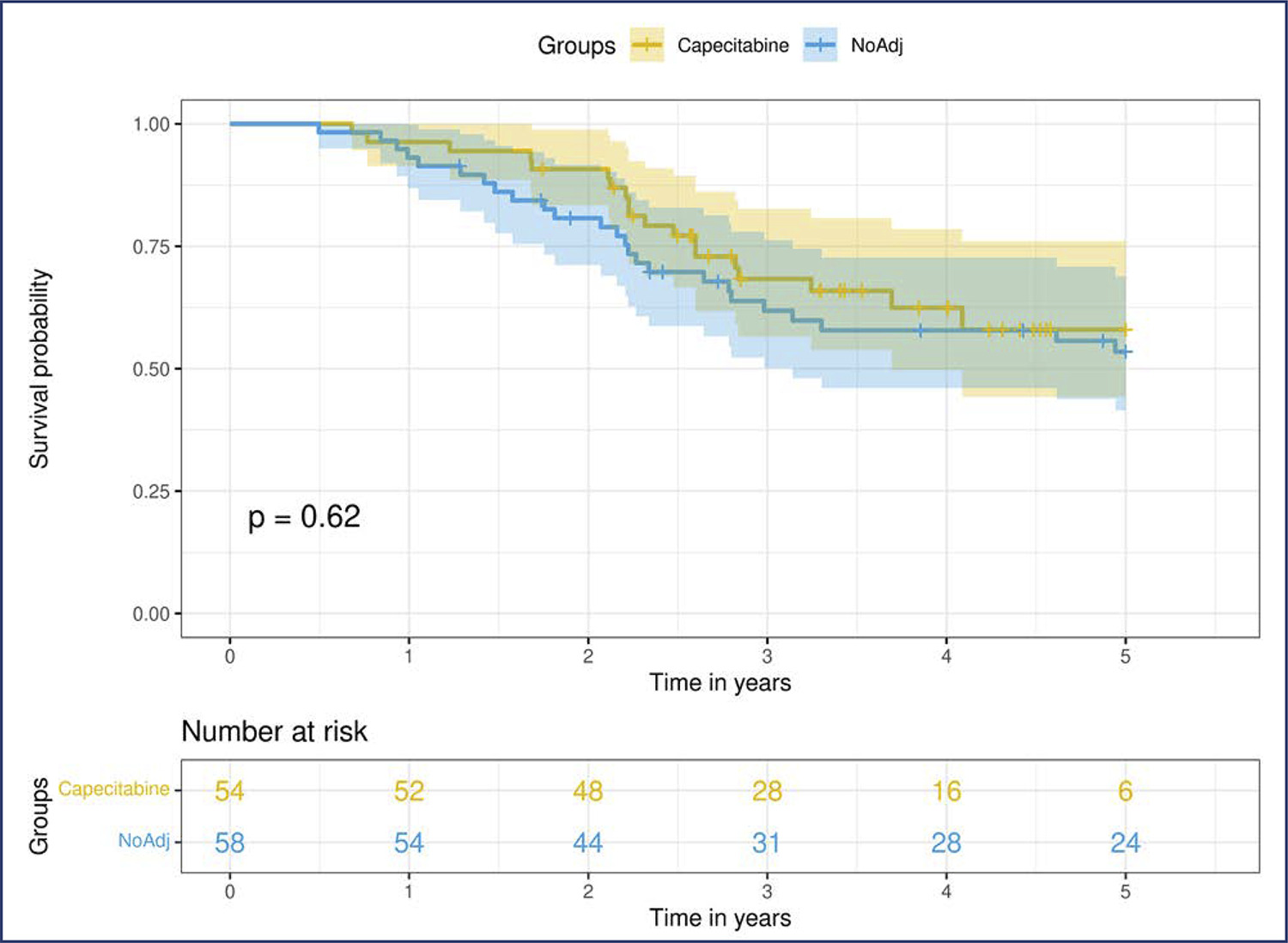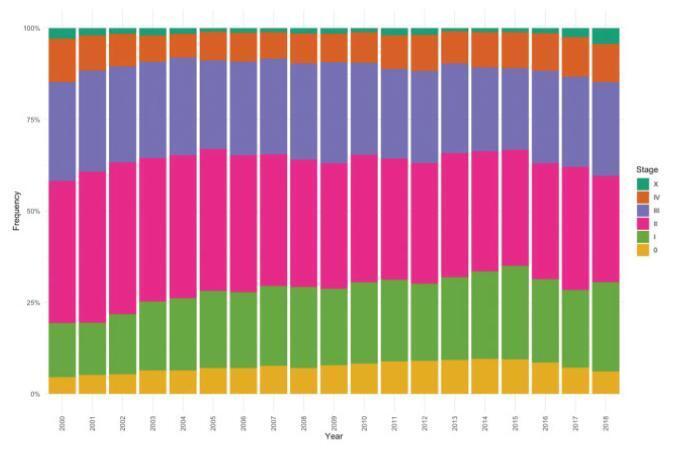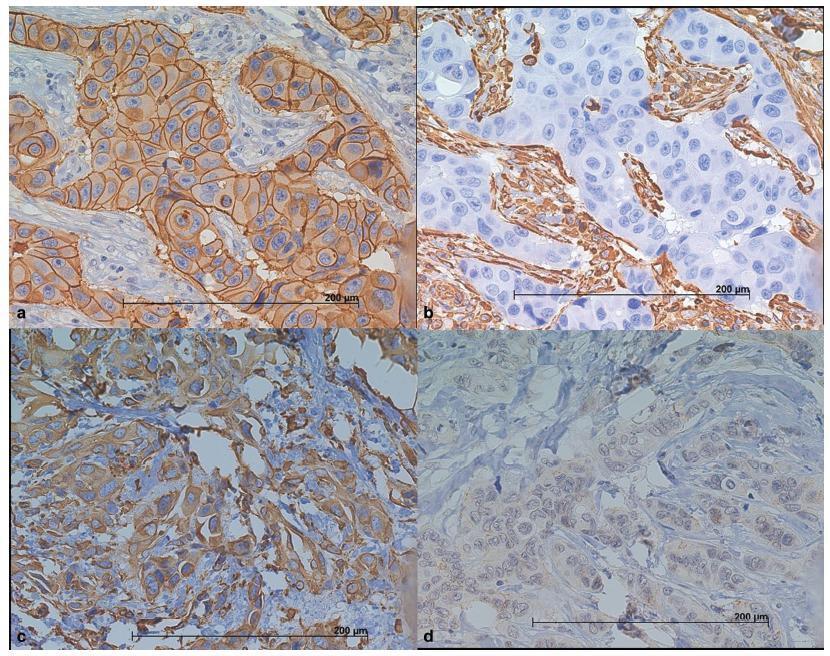You searched for:"Leonardo Fleury Orlandini"
We found (3) results for your search.Summary
Revista Brasileira de Ginecologia e Obstetrícia. 2024;46:e-rbgo29
Neoadjuvant chemotherapy (NACT) has become the standard of care for patients with triple-negative breast cancer (TNBC) with tumors > 1 cm or positive axillary nodes. Pathologic complete response (pCR) has been used as an endpoint to select patients for treatment scaling. This study aimed to examine the benefit of adding adjuvant capecitabine for TNBC patients who did not achieve pCR after standard NACT in a real-world scenario.
This retrospective cohort study included all patients with TNBC who underwent NACT between 2010 and 2020. Clinicopathological data were obtained from the patient records. Univariate and multivariate analyses were conducted at the 5 years follow-up period.
We included 153 patients, more than half of whom had stage III (58.2%) and high-grade tumors (60.8%). The overall pCR rate was 34.6%, and 41% of the patients with residual disease received adjuvant capecitabine. Disease-specific survival (DSS) among the patients who achieved pCR was significantly higher (p<0.0001). Residual disease after NACT was associated with detrimental effects on DSS. In this cohort, we did not observe any survival benefit of adding adjuvant capecitabine for patients with TNBC subjected to NACT who did not achieve pCR (p=0.52).
Our study failed to demonstrate a survival benefit of extended capecitabine therapy in patients with TNBC with residual disease after NACT. More studies are warranted to better understand the indication of systemic treatment escalation in this scenario.

Summary
Revista Brasileira de Ginecologia e Obstetrícia. 2019;41(11):633-635

Summary
Revista Brasileira de Ginecologia e Obstetrícia. 2018;40(12):779-786
The use of molecular markers can identify a subgroup of tumors with distinct recurrence patterns. The present study aimed to characterize the immunohistochemical expression of vimentin (VIM), of E-cadherin (CDH1), and of cytokeratin 5 (CK5) in patients with invasive ductal carcinomas (IDCs).
We have constructed a tissuemicroarray (TMA) from87 patients with IDC of the breast. Immunohistochemistry (IHC) was performed to study the expression of estrogen and progesterone receptors (ER and PgR), human epidermal growth factor receptor 2 (HER2), VIM, CDH1, CK5, and Ki67. The tumors were classified as luminal A and B (n = 39), HER2 enriched (n = 25), and triple-negative (TNBC) (n = 23), based on the IHC expression.
We have observed that luminal A and B tumors lack the VIM+/CDH1-/low phenotype. This phenotype was observed in 16.5% of the HER2+ tumors and in 60% of the TNBC tumors (p = 0.0001). Out of a total of 20 TNBC tumors, the CK5 (basal-like marker) was positive in 11 of them. The VIM+/CDH1-/low phenotype was observed in 5 CK5+ TNBC tumors (45%) and in 7 out of 9 CK5- TNBC tumors (78%) (p = 0.02). The median Ki67 index in the VIM+/CDH1-/low tumors was 13.6 (range: 17.8-45.4) compared with 9.8 (range: 4.1-38.1) in other tumors (p = 0.0007). The presence of lymph nodemetastasis was less frequent in patients with VIM+/CDH1-/low tumors (23% versus 61%; X2 test; p = 0.01).
Our findings suggest that the expression of VIM and CDH1 can identify a subset of IDCs of the breast with a mesenchymal phenotype associated with poor prognosis, high-grade lesion, and high mitotic index.
